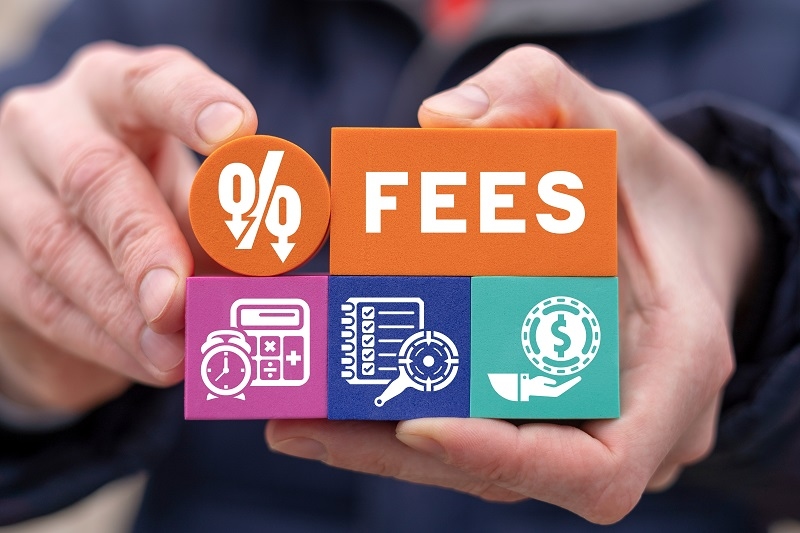
Online banking has changed the way Americans manage their finances—providing huge relief, flexibility, and digital-first offerings. While many online banks advertise “no fees,” the truth is a little more complicated. From monthly maintenance fees on online accounts to overdrafts on your virtual checking account, there are many things to consider in the fine print. This resource offers an extensive, straightforward overview of online banking fees, specifically detailing common online bank fees in the USA and teaching you how to successfully avoid digital banking charges.
Whether you are opening your first online checking account or trying to avoid surprise charges with an existing bank, this comprehensive overview will give you the financial savvy you need. Let's dive into the fee structures of online banking in the U.S, where the major differences are with traditional banks, and how you can avoid or say "no thank you" to them.
Online banking fees are the various charges deducted from account balances by online-only or hybrid (physical + online) banks for anything related to accounts. While many of these sites promote low-cost or no fees, most institutions still charge customers under certain conditions.
These fees can include:
Typical online bank fees in the U.S. vary by institution, but usually refer to types of accounts, level of usage, and additional services used.
Although not as prevalent with traditional banks, there are a few online institutions that still have a monthly maintenance fee for online accounts, particularly if specific requirements are not fulfilled (e.g., minimum balance or direct deposit limits).
These charges may cost between $5 to $15 a month and can consume your savings if not kept in check. On the bright side, most online banks eliminate these fees when you:
Knowing the fee policies of U.S. online banks assists you in comparing institutions and selecting banks that have clear or zero-maintenance policies.
The most costly online banking charge is often the overdraft fee. When you go over your balance, the bank covers the charge and charges you a large fee—usually $30 or more.
Increasing online banks are heading towards zeroing out overdraft fees entirely, but some still charge them, so it's important to read the terms of the account thoroughly.
While many online banks offer free access to large ATM networks, using an out-of-network machine could incur charges from both your bank and the ATM operator—adding up to $3 to $7 per transaction.
Some banks offer ATM fee reimbursements, but these are usually capped monthly.
Also, if you're traveling overseas, foreign transaction fees can be charged, usually 1–3% of the transaction value. Online banks such as Charles Schwab Bank and Ally Bank have no foreign transaction fees, which are perfect for frequent international travel.
Various banks have different fee structures. Here's what to review before signing up:
By reviewing these factors, you will be able to better comprehend fee structures at U.S. online banks and choose an institution that suits your spending habits.
Evasion of fees requires some planning ahead, but it is possible. Here's how to avoid popular online bank fees in the USA:
These behaviors are central to how to steer clear of digital banking fees and keeping your money where it should be—with you.
Though they have fewer branch locations and lower overhead, online banks still charge fees because:
Digital banks are also more likely to have clear fees than full-service banks. This is because digital banks are more transparent when it comes to their fees to consumers who actually read account disclosures.

Online banks based in the U.S. are regulated by laws from institutions such as:
Always review the disclosures at the time of sign-up. Banks must legally offer you a fee schedule, so you'll be well-informed.
Here's how well-known online banks compare when it comes to fees:
There are several top U.S. online banks with competitive, low-fee structures. Chime has $0 maintenance and overdraft fees, as well as limited ATM reimbursement via its SpotMe feature. Ally Bank boasts fee-free banking and limits ATM reimbursement ($0.00 to $10.00) without a minimum balance. Discover Bank has no maintenance fees or overdraft fees, and offers ATM access and a cash back debit card.
SoFi has provided unlimited ATM reimbursement and the ability to deposit paychecks sooner for direct deposit users. Axos Bank has maintenance fees ($0-$5) and overdraft fees ($0 - $25). They also provide different types of accounts (i.e., interest-bearing checking).
Even "free" accounts may have less frequent fees hidden. Here are red flags to watch out for:
Inactivity fees: If you don't use your account for months
Read the fine print to fully understand your bank’s online banking fees and how they apply to your behavior.
A handful of dollars in fees may not initially seem like a big deal, but they can add up over the years. Take a look:
Having to pay unnecessary fees year in and year out can run up hundreds or even thousands of dollars. That's why knowing the fee policies of U.S. online banks and how to prevent digital banking fees is financially empowering.
There are a variety of financial tools that assist you in monitoring and minimizing bank fees:
Integrating these tools into your routine makes it easier to avoid the most common online
What you should also take away from this discussion within the landscape of online banking fees in the USA is that it matters that those of you who are financially engaged in our ever increasingly virtual realities understand the costs of these transactions. While online banking offers convenience and flexibility, they are not always "free". Given the ever-increasing costs of overdrafts in online banking checking accounts and monthly maintenance fees on online banking accounts, ignorance can cost you money. This is why being familiar with the typical online bank fees in the USA and tips about how to avoid the fees associated with digital banking can help make informed decisions.
Choose U.S. online banks with transparent fee structures, utilize tools to automate your banking, and always read the fine print. The more you know, the less you pay - it's logical banking.
This content was created by AI